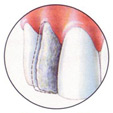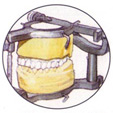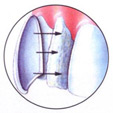Veneers, are paper – thin, custom-made coverings that conceal the front and side surface of your tooth, much like a mask or an artificial fingernail. If your teeth are stained, broken, or shaped in a way that is not pleasing to you, then you may want to consider veneers to restore your smile’s beauty. Veneers are most often custom made from porcelain and fit precisely over your existing tooth and are held in place by a special light sensitive resin which adheres the back of the veneer to the prepared tooth. Even though veneers are thin covering, they are extremely strong and durable and will generally not need to be replaced for 4 to 12 years. While they are not suitable for every patient, veneers are a cosmetic alternative for a variety of dental conditions of the front teeth including:
You too, can enjoy the many benefits of laminate veneers, an “art form” devoted to the enhancement of smiles. Using the dental equivalent of the painter’s palette, sculptor’s tools, and artisans skills, your dentist can craft a new more beautiful smile.




Applying veneers is a two-step procedure with your first visit lasting 30 minutes to 2 hours, depending on the number of teeth prepared. First, your dentist may choose the colour that will best match your natural teeth. Then, tooth enamel is removed so the veneer will blend with rather than overbuild surrounding teeth At least half the enamel is left intact to provide a surface to which the veneer is attached. After preparation, your dentist may coat your teeth with a paste like material that hardens into an impression, from which your dentist makes a model of your teeth.

Enamel is removed from the front and side surfaces of your tooth.

A model is made to help create veneers compatible with your bite.

The veneer is bonded to the front and side surfaces of your tooth.

The veneer is hardened in place with a high intensity light.
You should know: